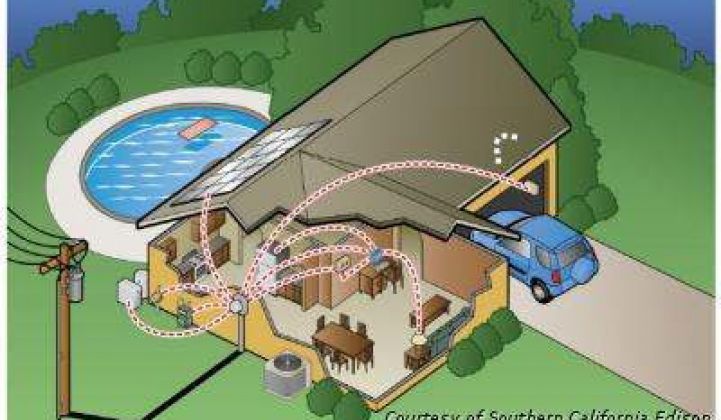Is Smart Energy Profile (SEP) 2.0 ready for prime time? Smart grid technology developers can now answer that question for themselves. On Monday, the ZigBee Alliance announced it has completed and ratified the standard meant to incorporate low-power ZigBee wireless, as well as ubiquitous Wi-Fi and HomePlug powerline technologies, into a IP-capable home energy networking framework, and made it available for download.
Over the next few weeks, the groups involved will set up testing and certification processes for getting devices OK’d for commercial sale, including a May 14 webinar. Given how long smart grid vendors and utilities have been waiting for this technology to finally appear, I’m guessing it will be a well-attended event.
It’s been nearly two years since ZigBee, Wi-Fi and HomePlug agreed to sit down and hash out a simplified yet IP-capable networking standard built on the foundation of ZigBee’s low-power home energy networking technology.
Known as SEP 1.0, or 1.x., those technologies are deployed inside millions of smart meters around the world. But they were built for ZigBee only, a problem that SEP 2.0 is meant to open up to a broader set of communications choices. The development process has been fraught with friction and delays, however. The Wi-Fi and ZigBee alliances in particular have sparred over issues stemming from differences in their networking architectures that could negatively impact one or the other's performance.
Meanwhile, since the SEP 2.0 effort started, we’ve seen lots of vendors demonstrate ZigBee, Wi-Fi and HomePlug interoperability with devices that were technically using features being built into the standard. How long the testing and certification regime will take to get underway is an open question, but it’s possible we could see products available later this year.
Utilities are certainly ready for the technology, which beyond supporting multiple communications pathways, also adds a lot more functionality. That includes things like EV charger controls and multi-family-housing support, as well as “support for multiple energy service interfaces into a single premises and support for any transport based on IETF IP-compliant protocols.”
That latter list presumably includes Wi-Fi and HomePlug, as well as ZigBee’s own IPv6-compatible spec released early this month. One question for the industry is how well today’s SEP 1.x systems will work in their upgrade to SEP 2.0 -- while they should be interoperable, it’s possible that SEP 1.0 systems won’t be able to support the full range of 2.0 functionality.
At the same time, while almost every smart meter in North America has a built-in ZigBee radio capable of communicating the SEP standard, relatively few have those radios “turned on” for in-home communications. Texas utility CenterPoint Energy has about 2 million or so Houston-area smart meters that can support ZigBee SEP 1.0, for example, but smart meter vendor Itron says that only about 6,000 in-home devices were hooked up as of last summer. Likewise, while California’s big three utilities have started allowing customers to buy devices that can “talk” to their smart meter’s ZigBee radio for up-to-the-minute energy data, sales are so far pretty slow, according to sources involved in the efforts.



